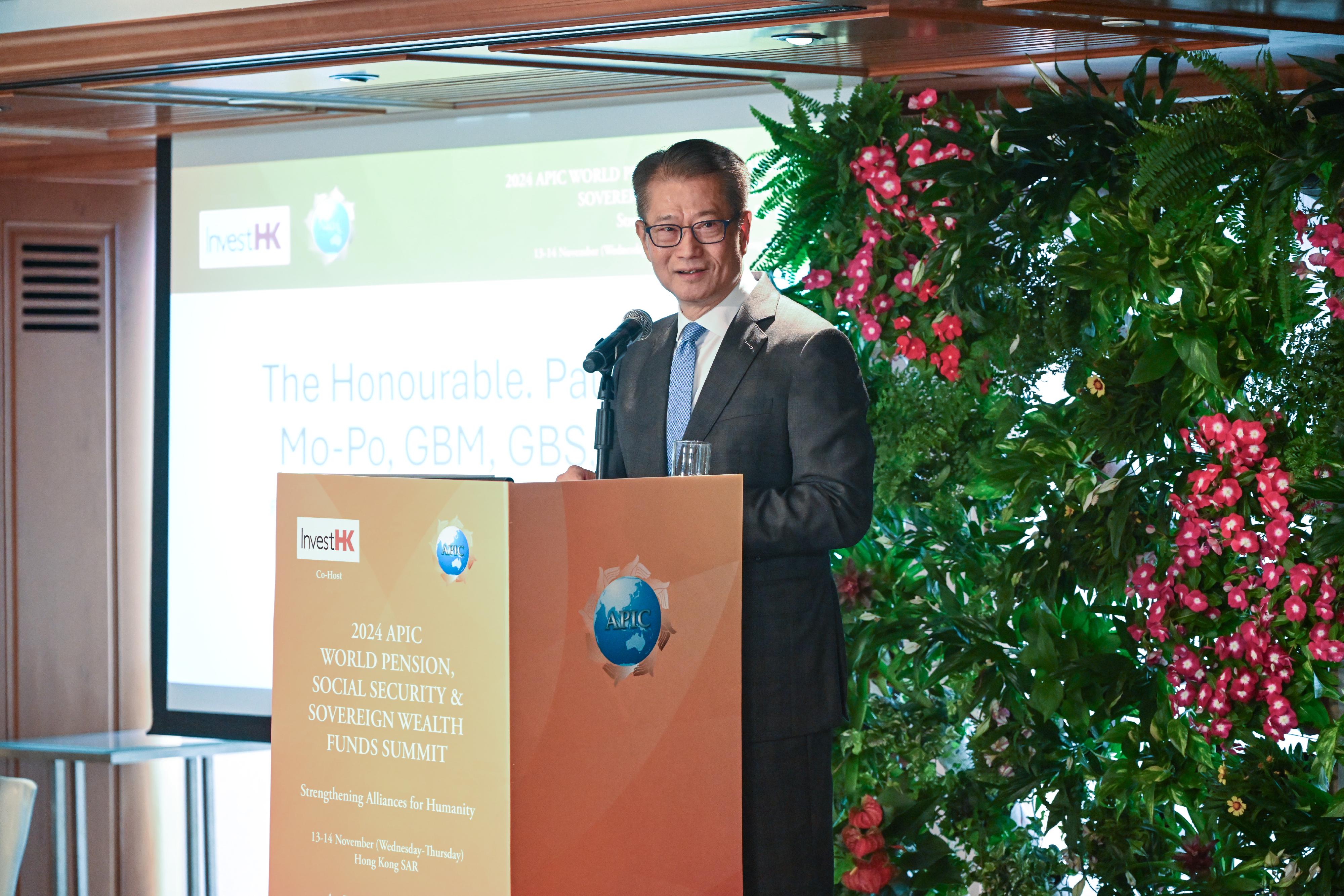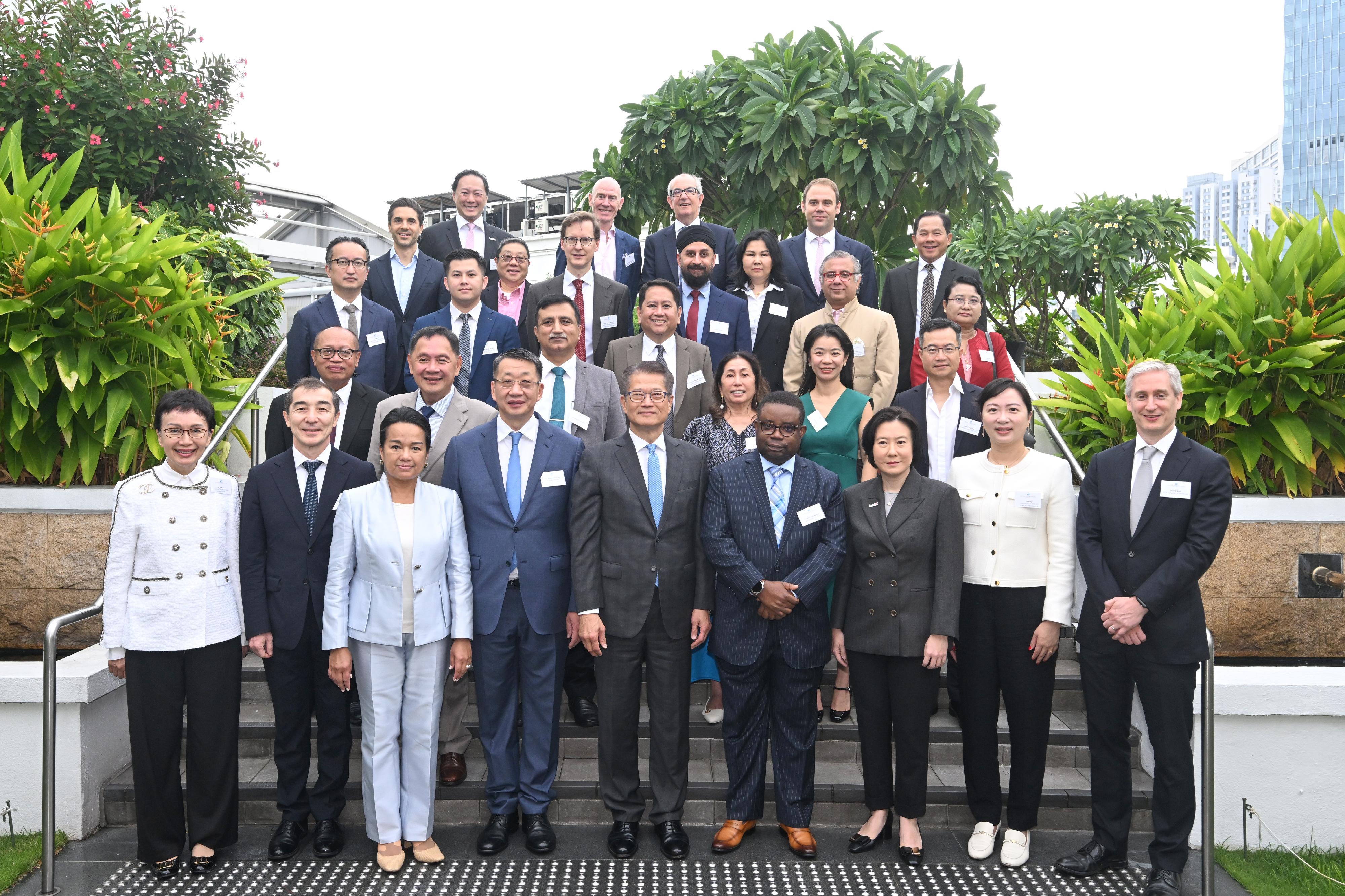LCQ9: Encouraging local investments to give priority to local market
Following is a question by the Hon Edward Leung and a written reply by the Secretary for Financial Services and the Treasury, Mr Christopher Hui, in the Legislative Council today (November 13):
Question:
The 2024 Policy Address has proposed that the Government would strive to collaborate with sovereign wealth funds in regions along the Belt and Road to further enhance Hong Kong's status as an international asset and wealth management centre. There are views pointing out that apart from proactively soliciting funds from overseas market to enter the local market, the Government should also play a leading role in encouraging local investments to give priority to the local market, thereby attracting overseas capital to enter the local market. In this connection, will the Government inform this Council:
(1) whether it knows currently the respective amounts and percentages of investment placements in the Hong Kong market from foreign exchange reserves under the management of the Hong Kong Monetary Authority, as well as self-managed seed capital funds set up by various tertiary institutions with part of their reserves;
(2) given that according to the information from the Mandatory Provident Fund (MPF) Schemes Authority, as at the end of March this year, total MPF assets amounted to $1.183 trillion, whether the Government knows the amount and percentage of investment placement in the Hong Kong market from such assets; of the respective amounts and percentages of investment placements in the Hong Kong market from assets held by the top five MPF trustees;
(3) given that according to the data published earlier on by the Insurance Authority, total gross premiums of the insurance industry in Hong Kong amounted to $310.9 billion in the first half of this year, whether the Government knows the amount and percentage of investment placement in the Hong Kong market from such premiums;
(4) as there are views pointing out that if the authorities can take the initiative to make additional investments in the local market, it will bring about a positive stimulating effect on the Hong Kong stock market, whether the authorities will study the formulation of investment instructions for assets under their management to require the allocation of a certain percentage of such assets for investment in the local market; if so, of the details; if not, the reasons for that; and
(5) regarding MPF and insurance premium investments, whether the authorities will study issuing guidelines to the relevant organisations to require the investment of a certain proportion of their assets in the local market, thereby driving capital flow back to the Hong Kong market and injecting more impetus into the local market; if so, of the details; if not, the reasons for that?
Reply:
President,
In consultation with the Education Bureau, the Hong Kong Monetary Authority (HKMA), the Mandatory Provident Fund Schemes Authority (MPFA) and the Insurance Authority (IA), our reply to the five parts of the question is as follows.
(1) As of end-September 2024, the official foreign currency reserve assets of Hong Kong stood at US$422.8 billion.
Under the premise of prudent management of the Exchange Fund to maintain Hong Kong's monetary and financial stability, the HKMA has gradually increased the investment exposure to investment managers with major operations in Hong Kong in recent years so as to encourage the expansion of their businesses in Hong Kong.
On open market investments, the HKMA employs various external investment managers to manage a portion of the Exchange Fund's assets, about 90 per cent of which are managed by investment managers with offices in Hong Kong. Moreover, all Hong Kong stock investments are managed by the local team of about 20 external investment managers. Over the past few years, the Exchange Fund has also invested in 32 local hedge funds through various channels.
On private market investments, the Long-Term Growth Portfolio (LTGP) of the Exchange Fund mainly works with internationally renowned investment managers by appointing them as general partners, of which over 60 per cent have established offices in Hong Kong, including a number of sizable private equity asset managers. While the general partners managing LTGP mainly invest in global or regional assets, the HKMA will continue to support locally-focused investment managers through other investment channels and attract other experienced investment managers to set up offices in Hong Kong.
As regards investments of post-secondary education institutions, the institutions may on their individual considerations adopt appropriate arrangements having regard to factors such as their institutional strategies and specific purposes of the funds concerned. The Government does not collect information on their investment allocation.
(2) Under the Mandatory Provident Fund (MPF) System, scheme members may build a suitable investment portfolio taking into account their own investment objective and risk tolerance level. The overall allocation of MPF assets by market and asset class primarily reflects the collective investment decisions made by over 4.7 million scheme members.
As of end-March 2024, statistical information on MPF investments by asset class is as follows:
(a) among MPF assets invested in equities, equities with primary listing in Hong Kong had a total value of HK$242.3 billion and a share of 31 per cent (for the five MPF trustees with the largest assets-under-management (AUM) size, the relevant ratios ranged from 20 per cent to 43 per cent);
(b) among MPF assets invested in deposits and cash, Hong Kong dollar denominated deposits and cash had a total value of HK $126.8 billion and a share of 94 per cent (for the five MPF trustees with the largest AUM size, the relevant ratios ranged from 90 per cent to 96 per cent); and
(c) among MPF assets invested in debt securities, Hong Kong dollar denominated debt securities had a total value of HK $89.8 billion and a share of 35 per cent (for the five MPF trustees with the largest AUM size, the relevant ratios ranged from 18 per cent to 51 per cent).
(3) The IA has not requested insurance companies to submit granular data on their global asset allocation strategies, and hence could not provide the relevant information.
(4) For the Exchange Fund, its statutory purpose is primarily to maintain the monetary stability of Hong Kong as well as the stability and integrity of the monetary and financial systems, so as to uphold Hong Kong's status as an international financial centre. Similar to other central banking institutions or monetary authorities in the rest of the world, the Exchange Fund needs to hold sizeable and highly liquid foreign exchange reserves, such that it can be used to maintain the financial and monetary stability of Hong Kong when needed. Except for the remnant of Hong Kong equities acquired in 1998 as part of market operations, the Exchange Fund mainly invests in assets outside Hong Kong and does not directly invest in the local market, so as to avoid exerting additional pressure on the local market should there be a need to dispose of some of the Exchange Fund assets for the aforesaid statutory purpose.
The stock market is affected by diverse factors (economic cycle, geopolitical situation, etc.). In the face of challenges from the external environment, the Government is committed to improving market liquidity continuously. Specifically, the Government established the Task Force on Enhancing Stock Market Liquidity last year to comprehensively review factors affecting market liquidity, and put up recommendations on enhancing different aspects including the listing regime, market structure, trading mechanism, etc. The Government and the Securities and Futures Commission as well as the Hong Kong Exchanges and Clearing Limited have progressively implemented measures concerned, and will continue to keep abreast of the changes and needs of the markets in and outside Hong Kong. Medium and long-term directions for market enhancement will be examined, with a view to further strengthening the competitiveness and fostering the sustainable development of the stock market.
(5) The MPF System is characterised by the provision of funds investing in different markets and asset classes for scheme members to choose from, such that they could build a balanced and diversified investment portfolio having regard to their own investment objectives and risk tolerance level, thereby achieving investment risk diversification. On the other hand, the IA has requested insurance companies via the Guideline on Asset Management by Authorised Insurers to formulate investment strategies taking into account factors such as their asset/liability relationship, overall risk tolerance level, liquidity needs, etc. Insurance companies allocate their assets, including insurance premium, into different markets and asset classes according to their investment strategies in order to achieve investment risk diversification. The Government has currently no intention to impose limits on the asset allocation of MPF investments and insurance premium investments.

